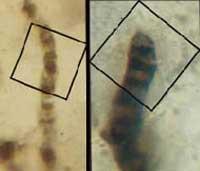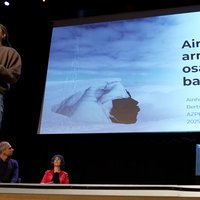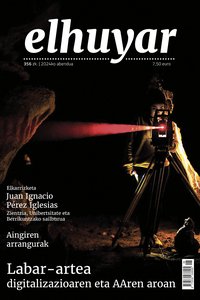They discover a bacterium that lived 3.5 billion years ago

Scientists from the Californian university discover that the fossil has the appearance of a primitive cyanobacteria. The new imaging technique, called Raman laser, has analyzed the structure and chemical composition of the black spots present in these rocks. The appearance of carbon molecules in the study seems to be one of the consequences of the biological activity of bacterial cells. The structure of the outer membrane of these cells is now studied. If what this group proposes is true, it means that the first animated Earth is a billion years earlier than expected.
At the same time, the answer has come from the University of Oxford. These microscopic black spots, although they appear to be of biological origin, are only a consequence of the hydrothermal activity of the place; it is possible that there appear biologically looking spots due to reactions between carbon monoxide and dioxide that leave the hydrothermal chimneys. In addition, they claim that they have no form of old microbes because they have structures too complex to be so primitive.
In any case, the already existing concern has resurfaced: Stains on stones are fossils of primitive living beings or only by chemical reactions? Definitely a long topic.
Buletina
Bidali zure helbide elektronikoa eta jaso asteroko buletina zure sarrera-ontzian










